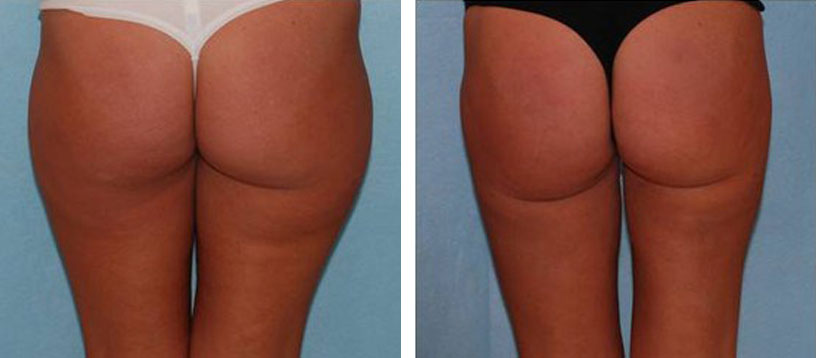Thigh Lift in Iran
Search and Compare the Best Clinics and Doctors at the Lowest Prices for Thigh Lift in Iran

Find the best clinics for Thigh Lift in Iran
No clinics available
Turkey offers the best prices Worldwide
Price: $ 758

- Home
- Iran
WHY US?
At Medijump, we're making medical easy. You can search, compare, discuss, and book your medical all in one place. We open the door to the best medical providers worldwide, saving you time and energy along the way, and it's all for FREE, no hidden fees, and no price markups guaranteed. So what are you waiting for?

Free

Best Price

Widest Selection

Risk-Free
What you need to know about Thigh Lift in Iran

Thigh Lift, also known as thighplasty, is a cosmetic surgery to improve and reshape the appearance of the thighs by reducing excess skin and fat. The goal of a thigh lift is to contour your thighs so that they look in proportion with the rest of your body as well as to eliminate sagging skin due to aging, pregnancy, or significant weight loss. If you want your thighs to be more youthful-looking or proportionate to your body image, and fitness and weight control have not worked for you, then you can consider this procedure.
What Does the Procedure Involve?
A thigh lift is performed under general or epidural anesthetic. Your surgeon may create an incision in the groin area, then they may remove excess skin and fat. After that, your surgeon reshapes and tightens the underlying tissue, and the remaining skin is smoothed, lifted, and stitched into place at the incision site. Your doctor may also combine the procedure with liposuction.
How Long Should I Stay in Iran for a Thigh Lift Procedure?
Since thigh lift is often performed as an outpatient procedure, you should be able to leave the hospital on the same day of the surgery. However, the recommended total length of stay in Iran is about 14 days since your doctor needs to remove the stitches within two weeks following the surgery.
What's the Recovery Time for Thigh Lift Procedures in Iran?
You can expect to go back to work within 7 to 10 days after your surgery, but the full recovery period until you can resume physical activity may take about 4 to 6 weeks. Since the recovery period can vary from one person to another, make sure to ask your doctor about your recovery timeline, including when you can start doing intense exercise, heavy lifting, and other vigorous activities.
What sort of Aftercare is Required for Thigh Lift Procedures in Iran?
You will be given specific instructions regarding medication, wound care, diet, and exercise. You will likely need to attend a follow-up checkup with your plastic surgeon to monitor your healing progress. After you are fully healed, it is important for you to follow a healthy diet, have regular exercise, and maintain a healthy weight to retain the result of your thigh lift.
What's the Success Rate of Thigh Lift Procedures in Iran?
A thigh lift is generally safe and the success rate is high. However, you need to be aware that the procedure has some side effects and risks, such as poor wound healing, infection, bleeding, seroma, asymmetry, deep vein thrombosis, skin loss, persistent pain, skin discoloration, numbness, recurrent looseness of the skin, and allergic reaction to the anesthetic.
Are there Alternatives to Thigh Lift Procedures in Iran?
If you do not like the idea of undergoing surgery or you are not an ideal candidate for the procedure, you may want to consider the alternatives, including liposuction, Vaser liposuction, and laser skin tightening. Consult with your plastic surgeon about which procedure is better for your situation.
What Should You Expect Before and After the Procedure
Before a tight lift, your thighs may look dimpled, saggy, and flabby. You may not feel confident about the appearance of your thighs because they are not proportionate to your body image. After the procedure, you can immediately see a positive change to your thighs. Your thighs will look more youthful and firmer.
Whilst the information presented here has been accurately sourced and verified by a medical professional for its accuracy, it is still advised to consult with your doctor before pursuing a medical treatment at one of the listed medical providers
No Time?
Tell us what you're looking for and we'll reachout to the top clinics all at once
Enquire Now

Popular Procedures in Iran
Prices Start From $26

Prices Start From $113

Prices Start From $931

Prices Start From $275

Prices Start From $76

Prices Start From $5

Recommended Medical Centers in Iran for procedures similar to Thigh Lift

- Interpreter services
- Translation service
- Religious facilities
- Medical records transfer
- Medical travel insurance
- Health insurance coordination
- TV in the room
- Safe in the room
- Phone in the room
- Private rooms for patients available

- Interpreter services
- Translation service
- Religious facilities
- Medical records transfer
- Medical travel insurance
- Health insurance coordination
- TV in the room
- Safe in the room
- Phone in the room
- Private rooms for patients available

- Interpreter services
- Translation service
- Religious facilities
- Medical records transfer
- Medical travel insurance
- Health insurance coordination
- TV in the room
- Safe in the room
- Phone in the room
- Private rooms for patients available

- Interpreter services
- Translation service
- Religious facilities
- Medical records transfer
- Medical travel insurance
- Health insurance coordination
- TV in the room
- Safe in the room
- Phone in the room
- Private rooms for patients available

- Interpreter services
- Translation service
- Religious facilities
- Medical records transfer
- Medical travel insurance
- Health insurance coordination
- TV in the room
- Safe in the room
- Phone in the room
- Private rooms for patients available
Thigh Lift in and around Iran
Introduction
Iran is a country situated in Western Asia, as well as the second-largest in the Middle East. It is home to one of the oldest civilizations in the world, starting from the fourth millennium BC when the Elamite Kingdoms were formed. Iran is widely known as the jewel in Islam’s crown, filled with awe-inspiring architecture and friendly people. The country is also a popular medical tourism destination due to its efficient healthcare system and experienced specialists. The medical centers in the country keep pace with the latest medical developments and provide top-class services. International medical tourists usually come to Iran for cosmetic procedures, which are currently witnessing a vast growth. Cosmetic procedures in the country, such as rhinoplasty and hair transplant, are performed with advanced scientific techniques and are highly successful. Furthermore, the healthcare cost in the country is a lot more affordable than in many other Western countries.
Popular Cities and Regions in Iran
The capital of Iran, Tehran, is the most populous city in the country. Situated at the foot of the snow-capped Alborz mountain range, the city is filled with museums, restaurants, parks, and friendly people. The most popular landmark in this city is the Azadi Tower, which is the symbol of the city. Besides this tower, visitors can also go to the Tehran City Theater to see its amazing architecture, explore the Treasury of the National Jewels to admire the largest collection of jewels found in the world and visit the Golestan Palace, which is the oldest historic monument in Tehran. Besides Tehran, Tabriz is another popular city and it is a modern industrialized city with a very rich history and historical monuments, such as the Blue Mosque and El Goli.
Transport in Iran
The main international airport is the new Imam Khomeini International Airport in Tehran. It serves international flights to and from numerous cities around the world, including Dubai, Ankara, London, Bangkok, and Beijing. Budget airlines are operating from this airport, such as Pegasus Airlines and Air Asia. To get around Iran, domestic flights are affordable and fast. Buses and trains are also widely available with extensive networks. Taxis are best for inter-city travel.
Visas in Iran
Iran allows citizens of 16 countries to visit without a visa for up to 90 days, including Armenia, China, and Malaysia. Most citizens of other countries can obtain a visa on arrival. However, visa on arrival does not apply to citizens of 14 other countries, such as the US and the UK.
Weather in Iran
Iran experiences four seasons. Spring (March-May) and autumn (September –October) are pleasant with mild temperatures. Summer (June to August) can be scorching hot, with the temperatures soaring to 37°C. The winter can get bitterly cold as the temperatures drop to 0°C.
Additional Info
- Local Currency: The official currency is the Iranian rial (IR). 1 USD is approx. 41,921 IR.
- Money & Payments: You cannot use ATMs, credit or debit cards, or traveler's cheques in Iran. Therefore, bring all you’ll need in cash.
- Local Language: Persian is the official language in Iran. However, the country has several main languages, including Azerbaijani and Kurdish. Not many people speak English in the country.
- Local Culture and Religion: About 99% of Iran’s population is Muslims, with the Shia branch of Islam as the biggest. The two largest non-Muslim religious minorities are Christianity and Bahá'í Faith.
- Public holidays: Islamic Revolution Day, Nature Day, Eid e-Fitr, and Eid-e-Qorban are some of the most important public holidays in Iran.
Popular Searches
- Plastic Surgery in Thailand
- Dental Implants in Thailand
- Hair Transplant in Thailand
- Breast Augmentation Thailand
- Gastric Sleeve in Thailand
- Gender Reassignment Surgery in Thailand
- Laser Hair Removal in Bangkok
- Botox in Bangkok
- Dermatology in Bangkok
- Breast Augmentation in Bangkok
- Coolsculpting in Bangkok
- Veneers in Turkey
- Hair Transplant in Turkey
- Rhinoplasty in Turkey
- Stem Cell Therapy in Mexico
- Rhinoplasty in Mexico
- Liposuction in Mexico
- Coolsculpting in Tijuana
- Rhinoplasty in Korea
- Scar Removal in Korea
- Gastric Sleeve in Turkey
- Bone Marrow Transplant in India
- Invisalign in Malaysia
- Plastic Surgery in the Dominican Republic
- Tummy Tuck in the Dominican Republic
- Plastic and Cosmetic Surgery in Poland
- Rhinoplasty in Poland
- Hair Implant in Poland
- Dental Implants in Poland
- IVF in Turkey